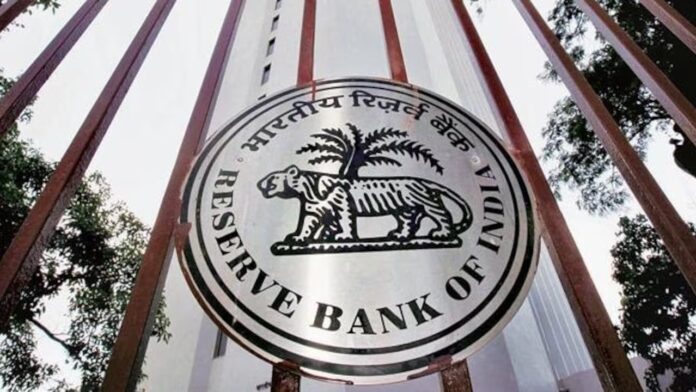NEFT Beneficiary Verification is a groundbreaking step introduced by the Reserve Bank of India (RBI) to enhance the accuracy and security of digital transactions. Starting April 1, 2025, users performing NEFT and RTGS transactions will be able to verify the beneficiary’s name before completing a transfer, similar to the UPI and IMPS systems. This move aims to prevent incorrect transfers and combat cyber fraud in India’s rapidly growing digital payment ecosystem.
Why NEFT Beneficiary Verification Is A Game-Changer?
The RBI’s introduction of this feature addresses two critical issues plaguing digital payments: accidental fund transfers to incorrect accounts and fraudulent activities.
- Reducing Errors:
Mistyped account numbers are a common issue in NEFT and RTGS transactions. The new system allows users to verify the recipient’s name, ensuring funds reach the intended beneficiary. - Enhancing Security:
Fraudsters often impersonate legitimate entities to deceive users into transferring money. With name verification, users can identify inconsistencies and avoid falling victim to scams. - Boosting User Confidence:
This added layer of transparency is expected to increase trust in digital payments, encouraging more users to adopt these systems for high-value transactions.
How The Beneficiary Verification System Works?
The process for verifying a beneficiary’s name is straightforward and user-friendly:
- Step 1: Enter the beneficiary’s account number and IFSC code in the NEFT or RTGS platform.
- Step 2: The system retrieves and displays the registered account holder’s name associated with the provided details.
- Step 3: Confirm the displayed name before proceeding with the transaction.
This quick, simple verification step significantly reduces the risk of errors and fraud.
Comparing NEFT Verification To UPI And IMPS
The beneficiary verification feature has been a cornerstone of UPI and IMPS transactions, where users can see the recipient’s name before completing a payment. Extending this functionality to NEFT and RTGS brings these traditional systems in line with modern digital payment platforms:
| Feature | NEFT/RTGS (New) | UPI | IMPS |
|---|---|---|---|
| Name Verification | Yes (From April 2025) | Yes | Yes |
| Real-Time Transfers | RTGS: Yes, NEFT: No | Yes | Yes |
| Error And Fraud Prevention | High | High | High |
The Growth Of Digital Payments In India
India has witnessed an unprecedented surge in digital payment adoption over the past decade. Systems like UPI, IMPS, NEFT, and RTGS have revolutionized the way individuals and businesses handle financial transactions. According to the RBI, digital transactions grew by over 40% annually between 2018 and 2023, driven by government initiatives like Digital India and increasing internet penetration.
Despite this growth, challenges like erroneous transfers and cyber fraud have remained prevalent. The introduction of beneficiary verification for NEFT and RTGS is a direct response to these issues, reinforcing the RBI’s commitment to building a secure digital payment infrastructure.
The Role Of Banks In Implementing NEFT Beneficiary Verification
Banks across India are gearing up to integrate this feature into their systems by the April 2025 deadline. Key responsibilities for banks include:
- System Upgrades:
Banks must update their digital banking platforms to support real-time name lookup functionality. - Customer Education:
Raising awareness about the new feature is crucial. Banks need to educate users through notifications, tutorials, and customer support channels. - Testing And Security:
Rigorous testing of the system is essential to ensure seamless operation and protect against potential cyber threats.
Challenges And Opportunities In Implementation
While the introduction of NEFT beneficiary verification is a positive step, it comes with its own set of challenges:
- Technical Infrastructure: Banks must invest in upgrading their IT systems to support the new feature.
- Operational Costs: Implementing this feature may increase operational expenses for financial institutions.
- User Adaptation: Educating users and encouraging them to adopt the feature will require sustained efforts.
However, these challenges are outweighed by the opportunities to build a safer, more efficient digital payment ecosystem.
Impact On Consumers And Businesses
The beneficiary verification feature is expected to benefit all stakeholders:
- For Consumers:
- Increased confidence in using digital payment systems.
- Fewer disputes and grievances related to incorrect transactions.
- For Businesses:
- Enhanced trust among clients and vendors.
- Streamlined payment processes, reducing delays and errors.
- For The Economy:
- Greater adoption of digital payments will boost economic efficiency and reduce reliance on cash transactions.
Steps Users Should Take To Prepare
To make the most of the new feature, users should:
- Update their banking apps and platforms to access the latest features.
- Double-check account numbers and IFSC codes before initiating transactions.
- Report any discrepancies to their bank immediately.
The Path Forward For Digital Payments
The introduction of NEFT Beneficiary Verification is a landmark development in India’s digital payment journey. By prioritizing user safety and convenience, the RBI continues to set high standards for banking systems worldwide.
With the April 2025 deadline fast approaching, users and financial institutions alike must gear up to embrace this change, ensuring a smoother, safer, and more transparent transaction experience. This initiative reinforces the RBI’s vision of a secure and inclusive digital payment ecosystem, paving the way for India’s future as a global leader in financial technology.




